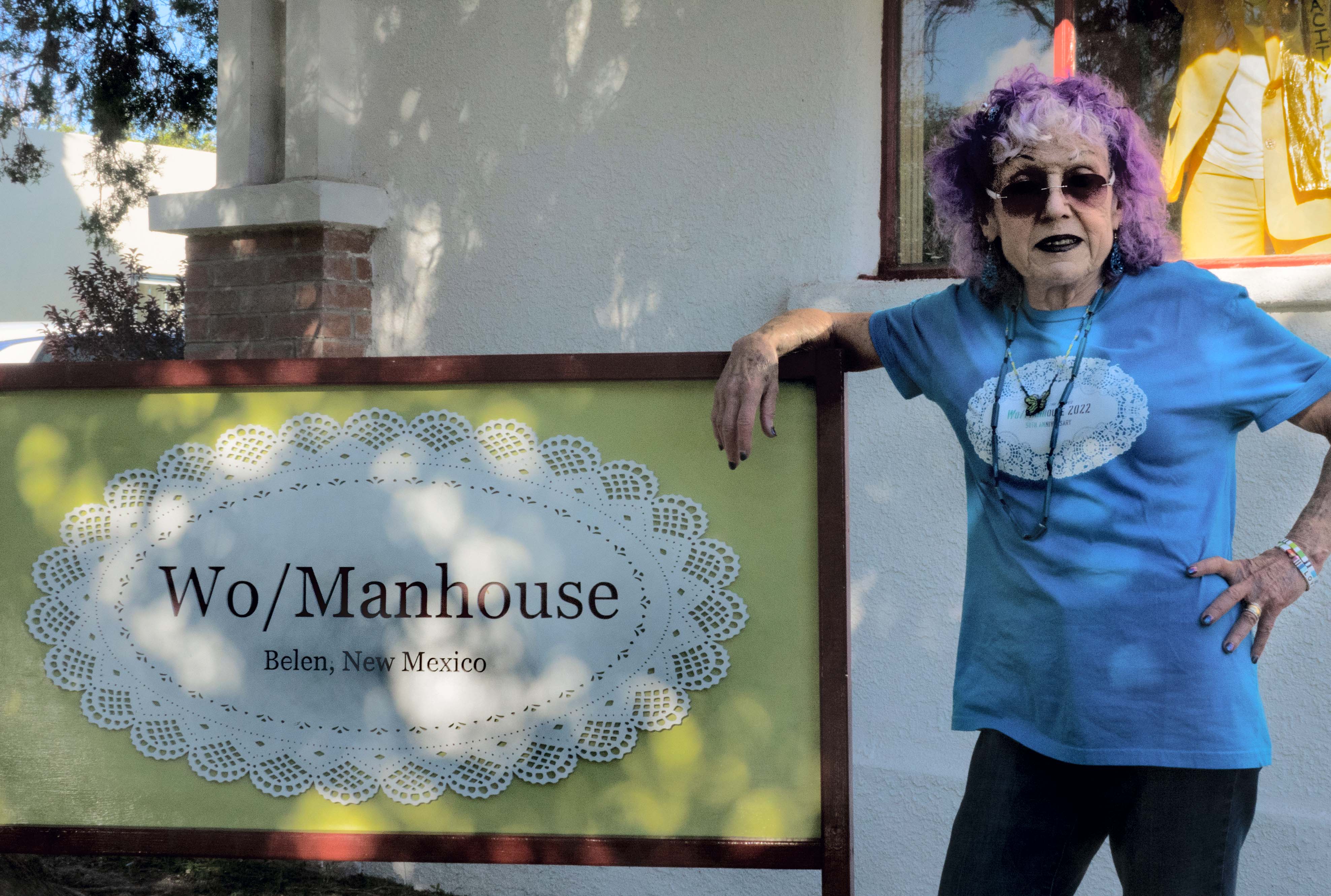
In 2022, Through the Flower celebrated the 50th anniversary of Womanhouse, the first openly Feminist art installation, which opened in 1972 in Los Angeles as part of the first Feminist art program, originally established by Judy Chicago at California State University, Fresno, then expanded at Cal-Arts. The goal of the program was to help young women realize their ambitions as artists without having to excise evidence of their gender from their work, something Judy Chicago had been forced to do in order to succeed as an artist in the male-centered L.A. art scene.
Chicago and her co-educator, artist Miriam Schapiro, worked with a group of students and local artists to turn a dilapidated house into a series of imaginative installations, establishing a performance space in the living room. During its month-long exhibition, Womanhouse was seen by over ten thousand visitors and the project captured global audiences through filmmaker Johanna Demetrakas’ documentary on the project that has been seen world-wide. The installation has inspired numerous works of art around the world and has contributed to significant changes in the very nature of art that included an expansion of materials considered suitable for artistic expression.
Through the Flower is celebrating the 50th Anniversary of Womanhouse with a historical exhibition at the Through the Flower Art Space in Belen and contemporary re-envisioning of Womanhouse in a nearby mid-century house. Megan Malcom-Morgan organized a team of community volunteers who were involved in the planning of this exciting project.
As a result of the changing definitions of gender and inclusivity, the Wo/Manhouse 2022 project was open to proposals by New Mexico artists across the gender spectrum. The selected artists transformed sixteen rooms into works of art that explore the subject of the home, which can be a place of love and nurture, but also one of power dynamics, abuse, struggles over gender roles, parenting issues as well as cultural and socioeconomic constraints. Nancy Youdelman, a successful artist and one of Chicago’s Fresno students who went to Cal-Arts and participated in the original Womanhouse, facilitated the project with Judy Chicago as advisor.
In 2006, British art historian Frances Borzello wrote in her book, At Home: The Domestic Interior in Art: “Until the 1890’s art history is silent on the subject of the domestic interior. Domestic scenes were relegated to genre painting which was considered to be a second-class category in terms of the important subjects of history and allegory. By the second half of the 19th century, the home became an important subject for art which allowed women artists like Berthe Morisot (1841-1895) and Mary Cassatt (1844-1926) to feel ‘at home’ as painters…Still, for decades, images of domesticity were suffused with a romanticism that was brought into question by Feminist art, particularly Womanhouse, which challenged traditional views of the home as a place of comfort and pleasure…presenting the home as the site of oppression rather than a place of nurture.” The goal of this project is to continue this historic dialogue at a time rife with misogyny, racial bias, attacks on women’s and trans rights, and political turmoil.
Helen Atkins
Albuquerque, NM
Rosemary Carroll
Santa Fe, NM
Vladimir Victor Dantes
Los Lunas, NM
Jen DePaolo
Albuquerque, NM
Laura Feierman
Rio Rancho, NM
Lindsey Fromm
Albuquerque, NM
Apolo Gomez
Albuquerque, NM
Olivia Hartvig
Medanales, NM
Jules Hoffman
Medanales, NM
Ana June
Belen, NM
Stephanie Lerma
Albuquerque, NM
Guinivere Mayse
Los Lunas, NM
JP (Jen Pack)
Albuquerque, NM
Gabriel Partido
Las Cruces, NM
Chris Riedel
Belen, NM
Graysen Riedel
Belen, NM
Kara Sachs
Belen, NM
Sallie Scheufler
Albuquerque, NM
Price Vincent Valentine
Taos, NM